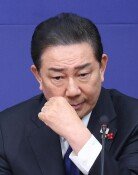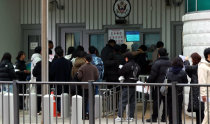Rigid educational grants should be reformed
Rigid educational grants should be reformed
Posted May. 25, 2022 08:05,
Updated May. 25, 2022 08:05
Elementary, middle, and high schools across South Korea are struggling to come up with budget execution plans with a sudden increase. The educational grants allocated to education offices in 17 cities and provinces this year was 65 trillion won, but 11 trillion won has been added due to a surplus in tax revenues. A total of 81 trillion won is available in grants this year, including the remaining budget from the previous year, which is 21 trillion won more than last year’s. It is the biggest amount in history. While the country is struggling with insufficient funds, education offices are on the other side.
In 2021, education offices renovated school facilities that were in good condition and purchased a large amount of equipment, such as beam projectors, as it received an additional six trillion won in grants from a revised supplementary budget. Not because it was necessary, but because the budget had to be spent. Some education offices even provided tablets or 300,000 won in cash to students because of excess budget. This year, the pressure is even bigger since a supplementary budget has doubled and there are only three months left to execute the budget, given the schedule of the election of a new superintendent and the approval process of city and provincial assemblies. Teachers are not even welcoming the increased budget as they spend much of their time on finding ways to spend the budget and do not have enough time left to prepare for classes. The way that grants are automatically allocated whenever there is a supplementary budget should change.
On the fundamental level, the grant system that promotes wasteful spending of the budget should be revised. Educational grants, which can be only spent on preschools and elementary, middle, and high schools, are designed to increase along with the economic size, regardless of budget demand. While the number of students enrolled this year decreased by 20 percent from 10 years ago, grants per student increased 2.5 times to 15.28 million won. South Korea’s share of educational expenses per student in elementary, middle, and high schools compared to its per capita GDP is the highest among 36 OECD countries while its share of college students is ranked in the 33rd place. This is why excess educational grants should be spent on university education.
“South Korea’s support for elementary, middle, and high schools is higher than the OECD average while its support for higher education is insufficient,” said Deputy Prime Minister and Minister of Economy and Finance Choo Kyung-ho said recently at the National Assembly. While the school-age population is getting smaller due to low birth rates, demand for well-educated talents and lifelong education is increasing due to the fourth industrial revolution and population aging. It is time to redesign the 50-year-old grant system to efficiently execute the limited budget for the changing demand in education.




![[천광암 칼럼]‘내란’과 김건희 비리… 흑역사로 막 내린 ‘용산파천’](https://dimg.donga.com/c/138/175/90/1/wps/NEWS/IMAGE/2025/12/28/133051629.1.jpg)


